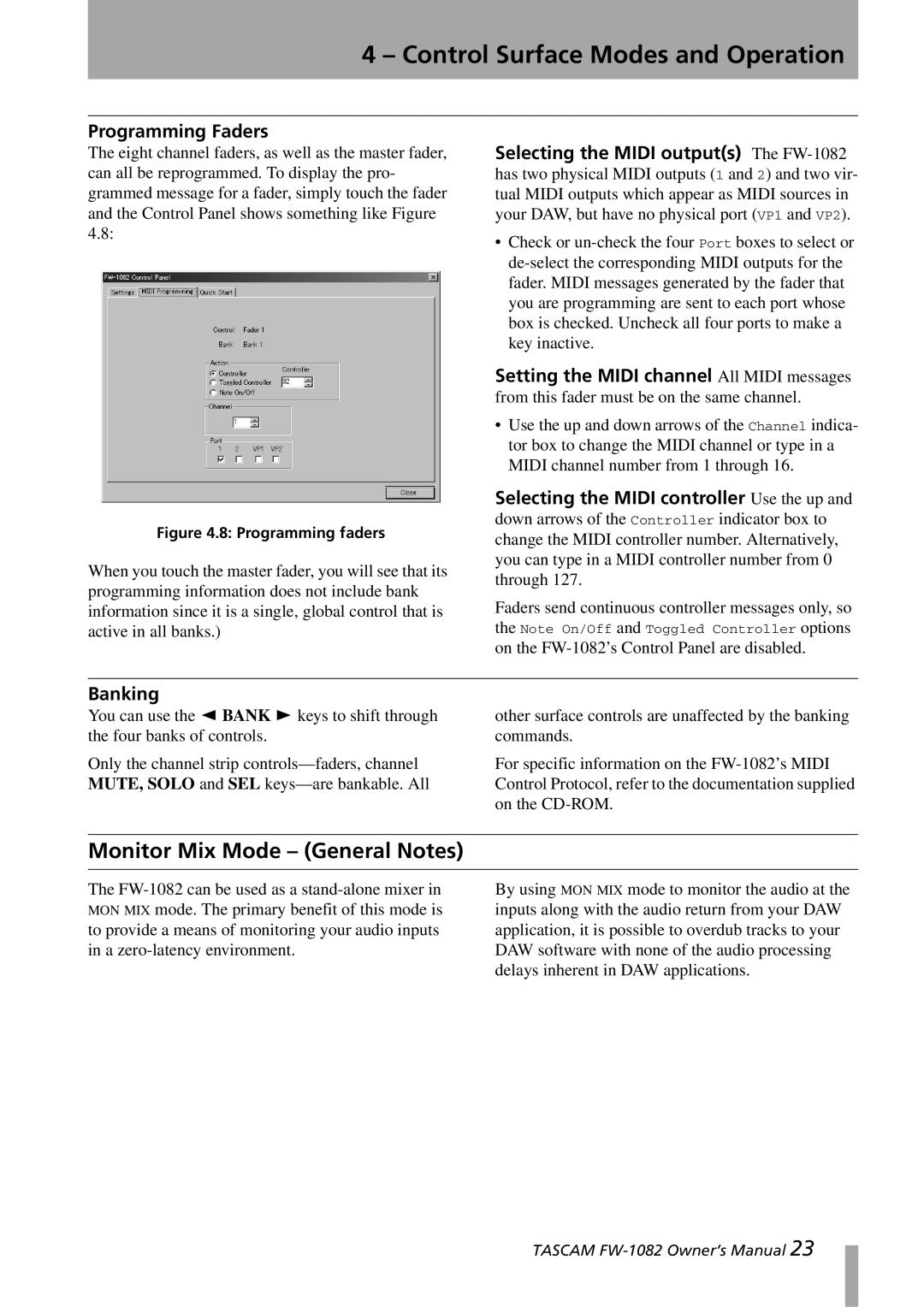
4 – Control Surface Modes and Operation
Programming Faders
The eight channel faders, as well as the master fader, can all be reprogrammed. To display the pro- grammed message for a fader, simply touch the fader and the Control Panel shows something like Figure 4.8:
Figure 4.8: Programming faders
When you touch the master fader, you will see that its programming information does not include bank information since it is a single, global control that is active in all banks.)
Selecting the MIDI output(s) The
•Check or
Setting the MIDI channel All MIDI messages from this fader must be on the same channel.
•Use the up and down arrows of the Channel indica- tor box to change the MIDI channel or type in a MIDI channel number from 1 through 16.
Selecting the MIDI controller Use the up and down arrows of the Controller indicator box to change the MIDI controller number. Alternatively, you can type in a MIDI controller number from 0 through 127.
Faders send continuous controller messages only, so the Note On/Off and Toggled Controller options on the
Banking
You can use the h BANK y keys to shift through the four banks of controls.
Only the channel strip
other surface controls are unaffected by the banking commands.
For specific information on the
Monitor Mix Mode – (General Notes)
The
By using MON MIX mode to monitor the audio at the inputs along with the audio return from your DAW application, it is possible to overdub tracks to your DAW software with none of the audio processing delays inherent in DAW applications.
TASCAM
